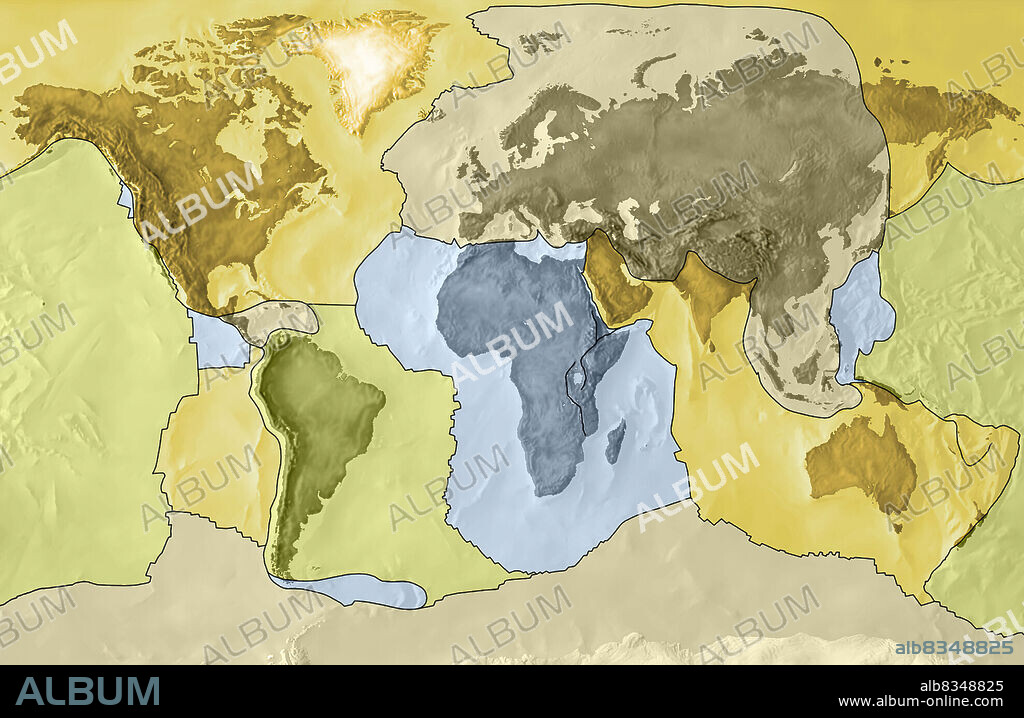alb8348825
Earths outermost layer is broken into about 13 principal plates, each of them carrying a continent, a part of an ocean, or both. These plates float on the magma in Earths mantle. This phenomenon is the central idea behind a theory called plate tectonics. According to the theory, several of the features on the planets surface can be explained by the movement of the plates. For instance, mountain ranges form where two plates collide, and faults form when two plates move apart or slide against each other. Plate tectonics also helps to explain the theory of continental drift, proposed by German scientist Alfred Wegener in 1912.

|
Add to another lightbox |
|
Add to another lightbox |



Caption:
Earths outermost layer is broken into about 13 principal plates, each of them carrying a continent, a part of an ocean, or both. These plates float on the magma in Earths mantle. This phenomenon is the central idea behind a theory called plate tectonics. According to the theory, several of the features on the planets surface can be explained by the movement of the plates. For instance, mountain ranges form where two plates collide, and faults form when two plates move apart or slide against each other. Plate tectonics also helps to explain the theory of continental drift, proposed by German scientist Alfred Wegener in 1912.
Credit:
Album / Universal Images Group
Releases:
Model: No - Property: No
Rights questions?
Rights questions?
Image size:
3952 x 2568 px | 29.0 MB
Print size:
33.5 x 21.7 cm | 13.2 x 8.6 in (300 dpi)
Keywords:
57792 • COLOR • COLOUR • CONTINENT • EARTH • GEOGRAPHY • ILLUSTRATION • ILLUSTRATIONS • PLATE TECTONIC • TECTONIC PLATE
 Pinterest
Pinterest Twitter
Twitter Facebook
Facebook Copy link
Copy link Email
Email

